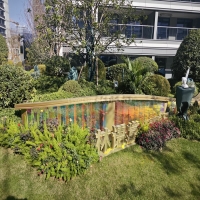Welcome to the website for landscape facilities products and knowledge.
How does the bin’s design prevent insects or rodents from entering and nesting inside?
The design of modern bins plays a crucial role in preventing insects and rodents from entering and nesting inside, ensuring hygiene and cleanliness in waste management. Here’s how these designs work:
1. Tight-Fitting Lids: Many bins feature tightly sealed lids that create a barrier, preventing pests from accessing the waste inside. These lids often require manual or foot-pedal operation, reducing gaps where insects or rodents could enter.
2. Smooth Surfaces: Bins with smooth, unbroken surfaces leave no crevices for pests to cling to or chew through. This design discourages rodents from gnawing their way in and stops insects from finding entry points.
3. Elevated Bases: Some bins are designed with elevated or recessed bases, making it difficult for rodents to climb or burrow underneath. This design also prevents standing water, which can attract insects.
4. Durable Materials: High-quality, thick plastics or metals are used to construct bins, ensuring they are resistant to damage from pests. These materials are less likely to crack or degrade, leaving no weak spots for entry.
5. Odor Control Features: Advanced bins incorporate odor-blocking technologies, such as carbon filters or airtight seals, which reduce smells that attract pests in the first place.
By integrating these design elements, modern bins effectively minimize the risk of pest infestations, promoting a cleaner and healthier environment. Whether for household or commercial use, investing in a well-designed bin can significantly reduce waste-related pest problems.
Related search:

Recommendation
Metal and acrylic color-changing combined curtain wall for large-scale public landscape facilities